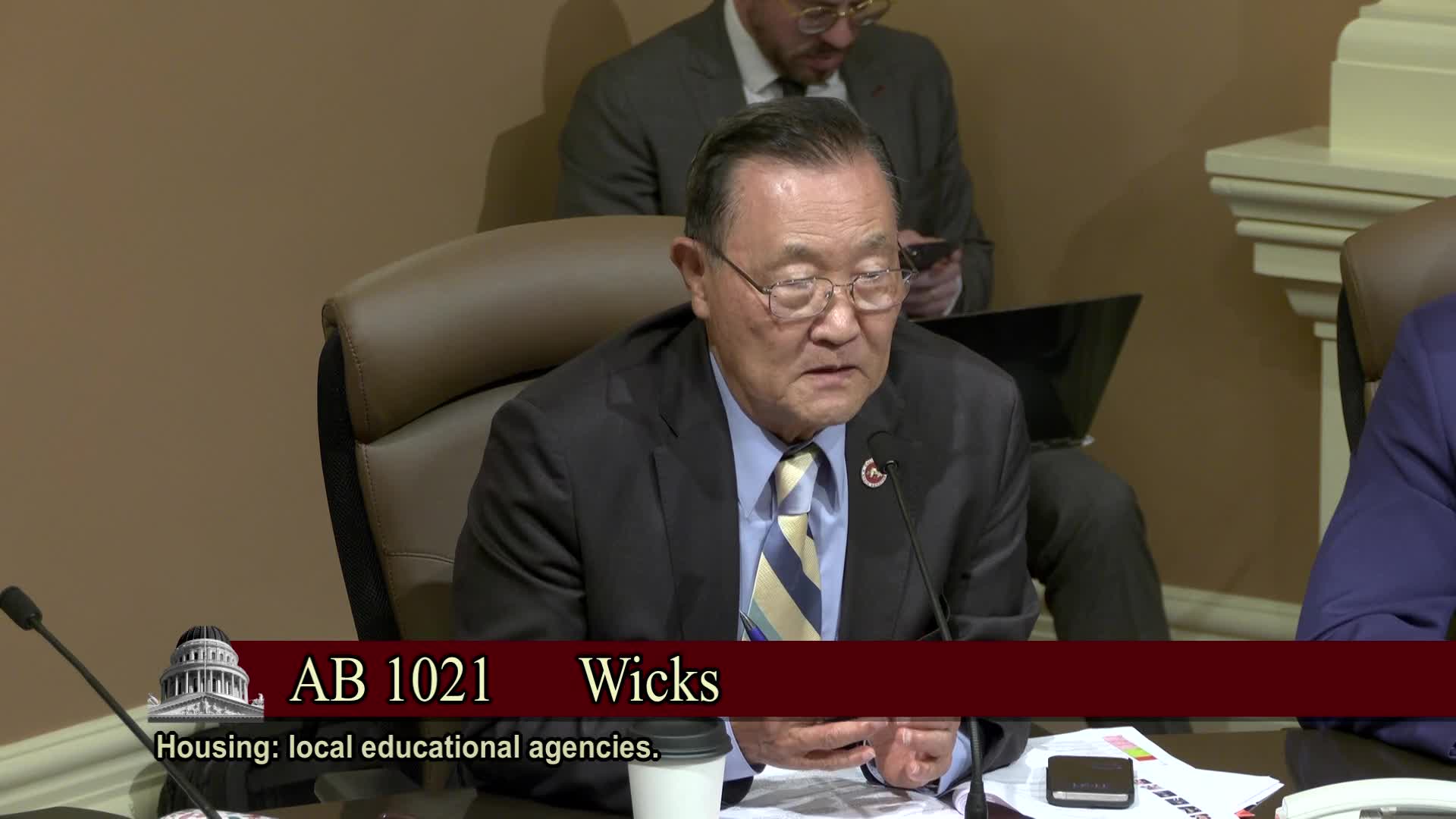California Assembly advances AB 507 for downtown office to housing conversions
July 02, 2025 | California State Senate, Senate, Legislative, California
This article was created by AI summarizing key points discussed. AI makes mistakes, so for full details and context, please refer to the video of the full meeting. Please report any errors so we can fix them. Report an error »

California's Senate Local Government Committee convened on July 2, 2025, to discuss critical housing initiatives aimed at addressing the state's ongoing housing crisis. A significant focus of the meeting was the introduction of a bill designed to create affordable housing specifically for teachers and other essential public service workers.
The proposed legislation aims to prioritize housing for teachers, police officers, and firefighters, addressing the pressing issue of teacher retention in areas like Oakland, where high housing costs force educators to commute from distant locations. By utilizing land owned by school districts, the bill seeks to provide affordable workforce housing, ensuring that local educators can live in the communities they serve. This initiative is seen as a creative solution to a dual problem: the need for affordable housing and the retention of essential public service workers.
In addition to this, Assembly Member Haney presented AB 507, the Office to Housing Conversion Act, which aims to transform underutilized office buildings into residential spaces. This bill responds to the high vacancy rates in downtown areas exacerbated by the pandemic and the shift towards remote work. By streamlining the approval process for these conversions, AB 507 seeks to revitalize urban centers while addressing California's housing shortage.
Supporters of AB 507, including representatives from Streets for All and the California Apartment Association, emphasized the importance of adaptive reuse projects in creating livable neighborhoods and supporting local businesses. They highlighted the need for innovative solutions to fill vacant office spaces and enhance community vitality.
The committee's discussions underscored the urgency of addressing California's housing challenges through legislative action. As the state grapples with a significant housing shortage, these proposed bills represent a proactive approach to creating affordable housing options and revitalizing urban areas. The committee's decisions will play a crucial role in shaping the future of housing in California, with potential implications for communities statewide.
The proposed legislation aims to prioritize housing for teachers, police officers, and firefighters, addressing the pressing issue of teacher retention in areas like Oakland, where high housing costs force educators to commute from distant locations. By utilizing land owned by school districts, the bill seeks to provide affordable workforce housing, ensuring that local educators can live in the communities they serve. This initiative is seen as a creative solution to a dual problem: the need for affordable housing and the retention of essential public service workers.
In addition to this, Assembly Member Haney presented AB 507, the Office to Housing Conversion Act, which aims to transform underutilized office buildings into residential spaces. This bill responds to the high vacancy rates in downtown areas exacerbated by the pandemic and the shift towards remote work. By streamlining the approval process for these conversions, AB 507 seeks to revitalize urban centers while addressing California's housing shortage.
Supporters of AB 507, including representatives from Streets for All and the California Apartment Association, emphasized the importance of adaptive reuse projects in creating livable neighborhoods and supporting local businesses. They highlighted the need for innovative solutions to fill vacant office spaces and enhance community vitality.
The committee's discussions underscored the urgency of addressing California's housing challenges through legislative action. As the state grapples with a significant housing shortage, these proposed bills represent a proactive approach to creating affordable housing options and revitalizing urban areas. The committee's decisions will play a crucial role in shaping the future of housing in California, with potential implications for communities statewide.
View full meeting
This article is based on a recent meeting—watch the full video and explore the complete transcript for deeper insights into the discussion.
View full meeting
